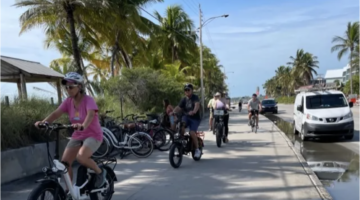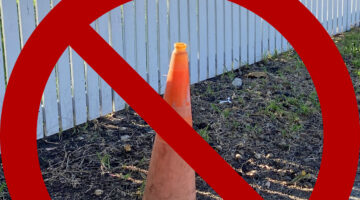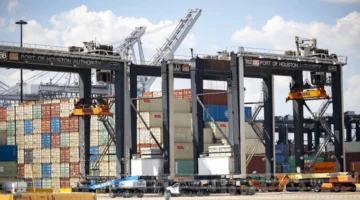Trump’s trip: Conventional images and unconventional talk
TAORMINA, Sicily (AP) — As he dashed through the Middle East and Europe, Donald Trump looked like a conventional American leader abroad. He solemnly laid a wreath at a Holocaust memorial in Jerusalem, had an audience with the pope at the Vatican and stood center stage with Western allies at the annual summits that dominate the diplomatic calendar.
But when Trump spoke, he sounded like anything but a typical U.S. president.
On his first overseas tour, the new president made no attempt to publicly promote democracy and human rights in Saudi Arabia, instead declaring that he wasn’t there to lecture. In Israel and the West Bank, he pointedly did not back America’s long-standing support for a two-state solution to the intractable peace process. And in the heart of Europe, Trump berated NATO allies over their financial commitments and would not explicitly endorse the “one for all, all for one” defense doctrine that has been the cornerstone of trans-Atlantic security for decades.
To the White House, Trump’s first trip abroad was an embodiment of the promises he made as a candidate to put America’s interests first and break through the guardrails that have long defined U.S. foreign policy. Trump advisers repeatedly described the trip as historic and groundbreaking, including one senior official who brashly said without evidence that Trump had “united the entire Muslim world.”
Addressing U.S. troops Saturday at a Sicilian air base moments before departing for Washington, Trump himself declared: “I think we hit a home run.”
Trump boarded Air Force One without having held a single news conference on the trip — a break in presidential precedent that allowed him to avoid facing tough questions about his foreign policy or the raging controversies involving the investigations into his campaign’s possible ties to Russia. Instead, the White House hoped to let the images of Trump in statesman-like settings tell the story of his first trip abroad, and perhaps ease questions about his preparedness for the delicate world of international diplomacy.
Yet those questions are sure to persist, particularly given Trump’s remarkable lashing of NATO allies in Brussels. Standing alongside his counterparts, the president effectively accused countries who do not meet NATO’s goal of spending 2 percent of their gross domestic product of sponging off American taxpayers. He left some allies, already nervous about Russia’s saber-rattling and Trump’s public affection for Russian President Vladimir Putin, further flummoxed when he ended his remarks without making an explicit statement of support for Article 5, the common defense clause that underpins the 68-year-old military alliance.
“The mood of Article 5, the idea that we are all in this together, is not the mood he conveyed,” said Jon Alterman, a senior vice president at the Center for Strategic and International Studies in Washington. “The mood he conveyed is you guys are a bunch of freeloaders.”
Some European leaders believe Trump can still be coaxed away from his controversial campaign positions. At the Group of 7 summit in the coastal town of Taormina, leaders launched an aggressive, behind-the-scenes campaign to get him to stay in the Paris climate accord.
While Trump emerged from the summit without a final decision on the Paris pact, he declared in a tweet Saturday that he will make a final decision next week.
Trump’s return home Saturday night also shifts attention back to the storm clouds of scandal hovering over the White House. In a briefing with reporters Saturday, White House officials shifted uncomfortably and refused to comment when asked about reports that Jared Kushner, Trump’s son-in-law and senior adviser, tried to set up secret communications with Russia after the election.
Trump’s nine-day, five-stop international tour resulted in few tangible policy achievements. The U.S. inked a $110 billion arms sale to Saudi Arabia and unveiled numerous business commitments in the region, though the White House never provided specific details about the scope of the agreements. At NATO, the White House touted the alliance’s commitment to boosting defense spending, though the resolution was essentially a continuation of a pact agreed to two years earlier.
Still, the trip offered the clearest picture to date of how Trump plans to put his imprint on America’s relationship with the world.
From the start, he set a new direction. Instead of following presidential tradition by making his international debut in a neighboring democracy like Canada or Mexico, Trump flew to Saudi Arabia, the repressive desert kingdom.
He appeared particularly comfortable in the setting. In Riyadh, he received a lavish, gold-plated welcome: His image was projected across the facade of the luxury hotel where he stayed, horses flanked his motorcade as it moved to one of the king’s desert palaces and an extravagant celebration was held in his honor, complete with a traditional Saudi sword dance.
Trump betrayed no awkwardness at relishing the warm embrace of one of the world’s most oppressive governments. Instead, he reciprocated with a pledge to not publicly chastise the ruling royal family for its crackdown on political dissent.
“We are not here to lecture — we are not here to tell other people how to live, what to do, who to be, or how to worship,” Trump said.
Trump was lavishly feted in Israel as well, embraced by a prime minister who despised his predecessor and was eager to flatter the new president. Trump received multiple standing ovations — one of his favorite measures of success — during a speech on U.S. relations with Israel. The photo of his solemn visit to the Western Wall was splashed across the front pages of Israel’s newspapers.
Like many of his predecessors, Trump made a personal appeal for peace between Israelis and Palestinians. But he never uttered the words “two-state solution,” the longtime U.S. policy plan that would create a separate homeland for Palestinians. He also made no mention of new Jewish settlements in the West Bank, a major point of contention for the Palestinians.
The smaller moments of the president’s trip were endlessly dissected as well, from first lady Melania Trump’s apparent reluctance to hold her husband’s hand on occasion to his shoving aside of Montenegro’s prime minister to get to the front of a pack of leaders at a NATO photo opportunity. At the G-7, it was Trump’s interactions with other leaders that commanded attention.
The six other heads of state took a short walk from one event to the next, chatting convivially as they strolled through the narrow Sicilian streets. Trump hung back, deciding against joining his peers.
Instead, he got in a golf cart and the American president’s mini-motorcade drove the route alone, Trump once more having charted his own course.
___
Follow Julie Pace at http://twitter.com/jpaceDC and Jonathan Lemire at http://twitter.com/jonlemire





No Comment